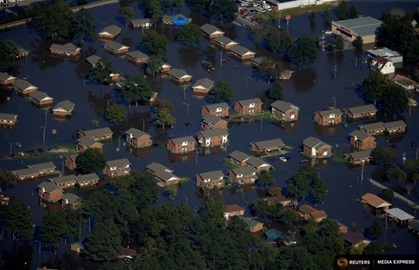Hurricane relief takes flight
Pilots for humanitarian organizations were headed for multiple scenes of devastation inflicted on the Caribbean by Hurricane Matthew, with aircraft deploying to assess damage and drop food and supplies in areas still isolated a week after the storm that reached Category 5 with 160-mph winds.
In Haiti, where more than 1,000 people lost their lives and more than a million were reported in need of humanitarian aid, Remote Area Medical had initiated flight operations. Early missions for the group’s Cessna 206 single-engine airplane were to airdrop critical items to stranded residents of offshore Île-à-Vache, where “about 250 people are in pretty darn bad shape with no food, and supplies all running out,” said organization Founder Stan Brock.
AERObridge, an organization that coordinates the use of donated aircraft to provide speedy disaster responses, was mobilizing resources to deliver medical aid.
“The damage to Haiti is the most severe and the Hurricane only increased the level of devastation already present in the country,” said AERObridge President Marianne L. Stevenson in an email to AOPA. “Currently, there is great need for air transport to carry medical supplies between Port Au Prince and Les Cayes.”

She urged pilots interested in flying relief missions beginning immediately to register their aircraft with AERObridge and indicate in the notes field that they are volunteering for Haiti missions. The organization also was ready to respond to aid requests in the southeastern U.S. states, where water damage to property and infrastructure took their toll, she said.
Representatives of Bahamas Habitat, a North Carolina-based organization that works in partnership with pilots and the aviation industry to coordinate humanitarian flight operations, were headed to The Bahamas on Oct. 12 for damage assessments, said organization President Stephen Merritt.
“We have already collaborated with Angel Flight Southeast to deliver three generators: one in Nassau, one in Fresh Creek, Andros and one in San Andros,” he said by email, adding that “the preliminary reports say that the major damage is in Nassau City, Andros Island, and West End section of Grand Bahama.”
The organization also focused resources on Haiti, where “our Haitian partners tell us that conditions are very difficult and getting worse. We were able to collaborate and send four airplanes last weekend to start the air bridge from Port au Prince to Les Cayes and the southwestern peninsula. This area is completely cut off from Port au Prince due the washout of a major bridge across the river.”

Pilots interested in serving with an aircraft in Haiti can contact Bahamas Habitat.
Units of the Civil Air Patrol in Georgia and Florida issued news releases describing multiple missions to reposition equipment, photograph affected areas, and make the imagery available to state and federal agencies for damage assessment. Checking for collapsed buildings that might have trapped occupants was part of the mission for CAP pilots recording the damage from the air.
Drones joined the ranks of aerial assets deployed to cope with Matthew, with NASA flying a 15,000-pound Global Hawk with 30 hours endurance above the hurricane to acquire and send real-time meteorological data with dropsondes as the hurricane neared Florida’s Atlantic coast.




